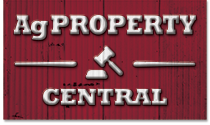The trend highlighted the resilience of rural property as an asset class at a time where other asset classes have struggled, Elders said.
Elders’ market insights specialist, Matt Ough, found that while dwelling values in Australia fell 5.3 percent in 2022, marking the largest calendar year decline in home values since 2008 and the All Ordinaries share market index fell 8.2pc over the same period, rural property prices, in contrast, surged to new heights in every state and territory.
Elders sources transactional level data for every rural property sale above 40 hectares in Australia for its report, before undertaking in-depth analysis to remove non-agricultural land uses and statistical outliers.

Mark Barber
Elders general manager farmland agency & agribusiness investments, Mark Barber, said the rural property market was now looking for direction in 2023.
“Land values continued to increase, and total property turnover declined across the year. The trends suggest that historically low interest rates, sound commodity fundamentals and favourable seasonal conditions have been fully factored-in to land values, and the market is looking for some direction as we move into 2023,” he said.
“The market will take cues from the relative performance of agriculture compared to other investment options, fundamental support for commodity prices and the impact alternative land uses such as renewable energy, biodiversity offsets and carbon sequestration opportunities.”
Key points raised by Elders for the calendar year 2022:
- National median price per hectare increased by 18.1pc to $8142/ha, following an 18.2pc gain in 2021
- Transaction volume declined significantly, down by 37.5pc in 2022 to 5794 totalling $11.5 billion
- The five-year compound average growth rate (CAGR) was 10.5pc to the end of 2022, indicating the median price per hectare is doubling every 6.9 years. The Northern Territory and South Australia recorded the strongest growth in median price per hectare for the 2022 year. In the NT prices increased by 59.5pc to $2267/ha driven by an increased volume of high-priced parcels from the Top End region. Meanwhile, SA recorded growth of 46.9pc in 2022 reaching $6346/ha after two years of flat price growth at state level. The increase was driven by the South East and Yorke regions.
The calendar year results showed a strong increase in price for New South Wales and Victoria, up 19.9pc to $8508/ha, the fourth consecutive year of double-digit increases. Top performing regions included West and North West NSW.
In Victoria, median price per hectare was up by 22.5pc to $12,937/ha, the second consecutive year of growth above 20pc. The significant decline in transaction volume for the year was most pronounced in Tasmania with a decline of 48.9pc followed by Victoria down by 45.9pc.
Transaction volume in most states came off a high set in 2021 after a flurry of sales driven by drought-relieving rains.
Nationally, median price per hectare increased by 11.2pc in Q4-2022, taking the quarterly median price to $9019/ha. Transaction volume declined by 1.7pc, totalling 1334.
At state level, the NT and Tasmania recorded the highest growth in median price per hectare in Q4, up 59.6pc and 36.5pc respectively, primarily driven by a shift in transaction mix favouring high priced parcels in the Top End region of the NT and the Northern region of Tasmania.
The report recognised that the landscape for rural property has changed in 2023 with many buy-side factors softening and others emerging as potential drivers of growth.
“While there is some volatility creeping into agricultural operating conditions, it is likely that the relative performance of rural land as an asset class compared to other investment options is playing a strong role in investment decisions,” Mr Barber said.
“That is, land holders are reluctant to sell out of agriculture unless they see viable investment options in other asset classes. Similar sentiment is held by buyers.”
Ongoing volatility in financial markets was likely to be supportive of farmland values.
“Cost pressures continue to erode margins, but there is limited evidence of a sustained change in demand for food and fibre,” Mr Barber said.
“The FAO food price index has fallen during 2022 but remains well above historical levels, second only to the peak in real terms in the mid-1970s. There is a strong correlation between commodity prices and farmland values.
“We are also seeing rising demand for farmland that can provide carbon sequestration and biodiversity credits. The farmland based carbon and environmental ‘services’ market will continue to evolve in 2023 and is likely to have an increasing impact on farmland values,” Mr Barber said.
Source: Elders

HAVE YOUR SAY